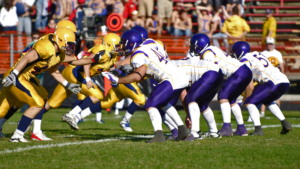Always consult your doctor before beginning any exercise program.
1. Have Fun
Love your running! Any plan you follow should be sustainable for both your short-term goals and long-term health benefits. If you are overly ambitious and try more than you can handle, you may get injured or mentally burnt out. Stay with what you can handle and enjoy it.
2. Stay Healthy
Don’t let small things turn into big things. It’s important to stay healthy so you can run most days. Some things to keep in mind constantly: keep your shoes in good condition, be careful in bad weather, work on improving running form, stretch to increase flexibility, don’t run with an injury and don’t do what you are not ready for. Begin each day by drinking water. Remember, this is an investment in your health.
Another tip for endurance athletes is to get full blood work tests done, including iron levels, at your annual physical. Get a hard copy for your records. As an endurance athlete, you don’t want your iron levels to be too low. Consult your doctor about your training.
3. Get a Coach
Find someone who you trust. Evaluate your current condition, what your goals are and how can you get from here to there. A coach can also help you identify and minimize risk factors in your training and improve strength, flexibility and running form.
4. Be Consistent
Train with consistency and at a pace that is “conversational.” It’s true what Coach Bill Squires and others have said: putting miles in is “Money in the Bank.” Enjoy the outdoors, especially in the morning – runs are a great way to begin the day!
5. Gradually Build Miles
Over time, gradually increase weekly mileage (or minutes). Coach Arthur Lydiard said, “The bigger the base, the higher the peak.” If you want to complete a marathon, begin training as many weeks in advance as possible. This helps you to safely build your aerobic base. Hopefully, you make running an important part of your healthy lifestyle ‒ there are tons of benefits to this! A rule of thumb many use for building miles is increasing about 10% per week. Build safely at a rate that you determine with your coach.
6. Develop a Long Run
For many, this is the most important run of the week. If your goal is to complete a marathon, developing a long run is key. This is where you learn pacing, hydrating and fueling. To complete a marathon, it is ideal to run at least one 20-miler beforehand. Try to make the marathon just another long run, and don’t be intimidated by the distance. This should be a run to enjoy. Try to find others to do long runs with at your pace.
7. Even and Negative Split Running
Every run should be even or negative split.
- Even split running means the second half is the same time as the first half.
- Negative split running means the second half is faster than the first half.
If your objective is to complete a marathon (as opposed to racing a marathon) you don’t need to run faster than marathon goal pace very often, if at all. The important thing is to discover the pace you can hold for 26.2 miles and practice that, memorize it, and execute it on race day. The marathon can be simply executing another long run. A couple good methods to determine marathon pace are:
- Keep your heart rate (HR) under 150 on most runs. Depending on your age and other factors, your HR may be lower. If your HR is going up, you may be running too fast. This is very important on long runs.
- What was your pace on a 20-mile run? Did you run an even or negative split? What was your HR?
8. Hydrating and Fueling
Whichever marathon you are running, find out what they are giving out for energy drinks, and practice taking it. Try to have as few surprises as possible on marathon day. It’s hard to stay hydrated, so try to drink water at every water stop. Practice hydrating on the run to find out what you can handle. In regards to fueling, it’s critical to go out correctly in the marathon so you can use more fat for fuel and save glycogen — one reason to practice even/negative split running every day. You will also want to practice fueling, particularly on the long run, to find out what you can handle. Hitting the wall at mile 20 usually means running out of fuel, so part of your practice will be to take in some fuel to help get from 20 to 26.2. Find out what will be given out at the marathon, and practice fueling with it. Plan to take in a few hundred calories of fuel during the race.
9. Build Base, Learn Pace, Execute Race
Marathon training is simply preparing your body to run 26.2 miles.
- Build Base: The foundation to complete 26.2 miles.
- Learn Pace: Discover, practice and perfect even and negative split marathon running. Don’t go out faster than the pace for your best long run.
- Execute Race: It’s very easy to go out way too hard in a marathon and blow up. Your training will instill the confidence and discipline to execute your marathon race.
10. Taper
In the last couple weeks before the marathon, you should be gradually decreasing miles, decreasing the long run, and getting extra rest and recovery. You might cut by 30-50% per week for the two weeks leading up to the marathon. Discuss the taper with your coach. Improvement is not possible without recovery, so embrace this time to get the extra recovery. That doesn’t mean you should take two weeks off. If you are healthy, you should still run most days. One good way to monitor recovery year-round is to take your resting heart rate periodically. If you see a trend of elevated heart rate, take extra rest.
Running a marathon can be one of the most rewarding experiences of a runner’s life. Enjoy your training, stay healthy and consult your coach along the way.
How useful was this post?
Click on a star to rate it!
Average rating 5 / 5. Vote count: 7
No votes so far! Be the first to rate this post.



